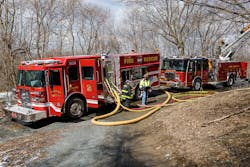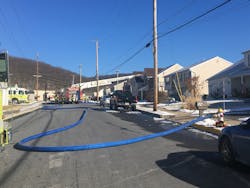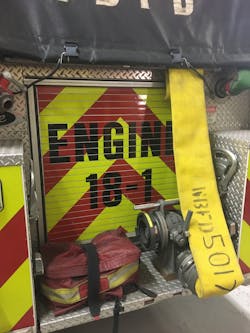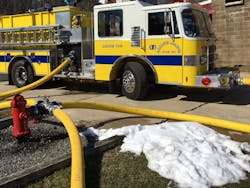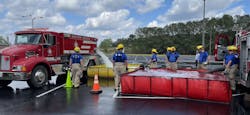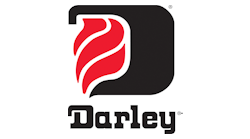For years, there has been an ongoing debate of who is laying the water supply line at a fire. I have heard many theories on this subject over my 23 years in the fire service related to whether it is the first-due engine or the second-due engine. Further, is the engine laying in to the fire or doing a reverse lay out from the water source? Does your department have a standard operating procedure (SOP) for which engine is dropping the supply line? With these questions in mind, let me give you some suggestions to think about the next time you head out the door to a fire.
Who is responding?
Let us think about where our next engine is coming from. In an urban department that has plenty of staffing, you will know what apparatus is responding. In the volunteer and rural world, this apparatus could come from a number of departments, depending on the time of day and staffing levels. Regardless, you must always be thinking ahead to the next step. It is important for your community that your automatic aid include the closest companies to facilitate the speediest response. This should apply to ALL incidents, not just structures, but also the “every day” automatic alarm.
Know what you need
Research shows that, considering the more modern contents burning in structures today, fires are burning hotter and faster, and flashovers are occurring at alarming rates. As such, by the time of the fire department’s arrives, there’s a good chance that the room of origin has already reached flashover, and if it hasn’t, the fire is likely well developed and will reach flashover soon.
Considering how rapid fire spreads in today’s modern environment, fire crews need a continuous water supply to support firefighting operations in order to save life and property. If the engine runs out of water, you can’t suppress the fire and you are not protecting anything. In fact, you are putting your fellow firefighters and the public at risk.
Not only have building materials and fuel loads changed over the years, so have personnel numbers. For these reasons, we need to change our thought process and tactics when it comes to laying a supply line. You may be fortunate to have numerous volunteers on hand at all hours of the day, but that is an ideal situation. Many more departments have limited staffing and face extended response times. In a perfect world, we would love to have a full complement of personnel on the apparatus every time out the door, but this is not realistic in most communities.
Equipment limitations
It is important for crews to know their equipment limitations. Whether it be an engine, a tender or a quint, it is important to know the size of the water tank and its capabilities. We all know we can go through tank water quickly—but just how quickly? A single handline could flow between 125 and 185 gpm depending on the nozzle flow rate. Given these flow rates, a 500-gallon tank will only last 3–4 minutes flowing a single handline. Additional handlines or master stream operations will deplete the water even faster.
A driver operator should know what each discharge flows in gpm as well as how long the on-board water will last given those flow rates. A simple way to remember these flows is by labeling your pump panel for quick reference during the incident.
Who lays the supply line?
All of this information thus far leads to the need for a rapid supply line being in place. Now for the million-dollar question: Who lays the supply line? This should be accomplished by the first-arriving engine. When the first-arriving engine lays the supply line, this puts us one step closer to achieving the continuous water supply needed to effectively mitigate the situation.
If your response area has fire hydrants in close proximity, then the supply line should be laid from the closest hydrant. If your response area consists of rural areas with long driveways, then the first-arriving engine should drop a supply line at the end of the driveway by the street, and then lay the supply line back up the driveway.
Appliance considerations
If you don’t know the flows of your hydrant system, reach out to your local water authority. Some hydrant systems can self-support a large-diameter hose supply line, while others cannot. Know your hydrant connection threads. Some hydrants have threaded outlets while others have Storz connections.
A good practice is to use a hydrant valve to allow another engine to connect to the hydrant getting the maximum pressure, and flow from the hydrant to the attack engine. The hydrant valve can be either a Humat valve or another four-way valve, depending on department preference. Whether your department utilizes a hydrant valve or needs a special connection for your local hydrants, the appliance should be pre-connected and easily accessible for rapid deployment.
Tactical considerations
Personnel numbers are dependent on the steps taken when the first-arriving engine lays the supply line. First, an announcement should be made that the first-arriving engine has its own water supply. If the first-arriving engine lays the supply line but doesn’t make the connection, then this should also be announced for the next-arriving engine to pick up or complete the connection. For example: “Engine 1 is laying a supply line from a hydrant at First and Main streets, second-in engine complete the connection.”
If your engine has enough personnel to leave one firefighter at the hydrant to make the connection, that is helpful and makes for a rapid water supply. If your engine is short on personnel, then the driver can get out and quickly drop the supply line and hydrant bag either at the intersection or wrap a hydrant, then proceed to the fire scene. Utilizing the engine driver to drop the supply line gives the officer and other firefighters the extra seconds to compose their arrival actions.
Rural operations
Final thoughts
Establishing water supply is a critical operation at all fires, not just structure fires in urban settings. When a first-arriving engine approaches the scene on any type of fire (structure, vehicle, etc.) and has visible signs of a working incident, the crew must be proactive and drop a supply from that first-arriving engine. We need to get out of the mindset that the next engine will establish the water supply and instead assume that this is the responsibility of the first-arriving apparatus. Even on reports of nothing showing from target hazards, it is a good practice to lay a supply line. With this in mind, next time, have the first-arriving engine lay in to the scene instead of standing by at the hydrant. Have the second-arriving engine go to the hydrant to support the hydrant operation.
Letting the first- and second-arriving apparatus pass by a hydrant, leaving the third-arriving engine to lay a supply line, should be unacceptable, but there are areas where this is still common. Every incident should be treated as if you need a supply line until proven otherwise. If we change our thought processes and actions on arrival for the small events, then we will be prepared for the larger incident when every droplet of water matters.
Steven Noll
Steven W. Noll, CFPS, has been in the fire service for 23 years, currently serving as a career firefighter for the Western Berks Fire Department in Wernersville, PA, and as a volunteer captain with the Central Fire Company #1 in Laureldale, PA.
